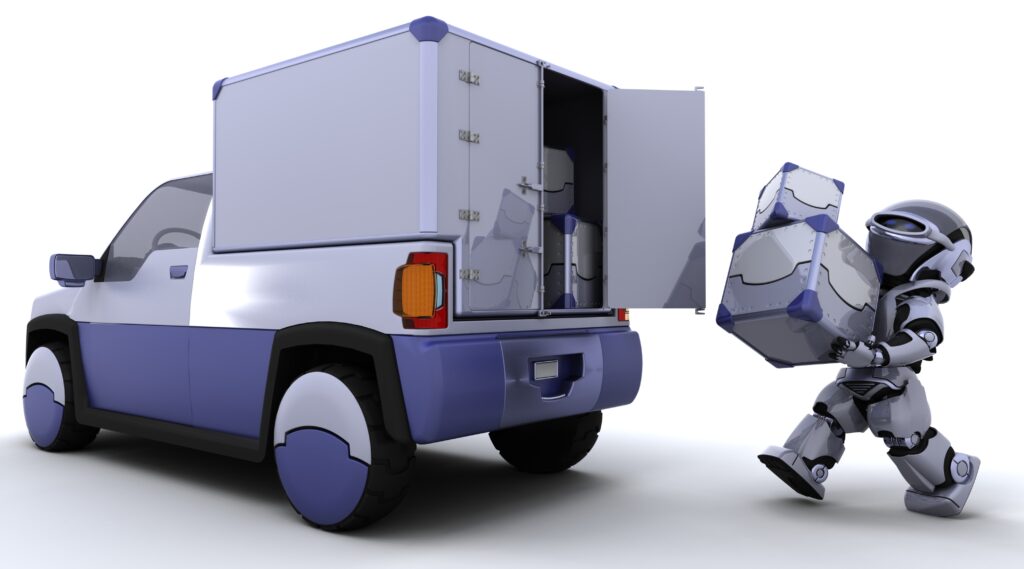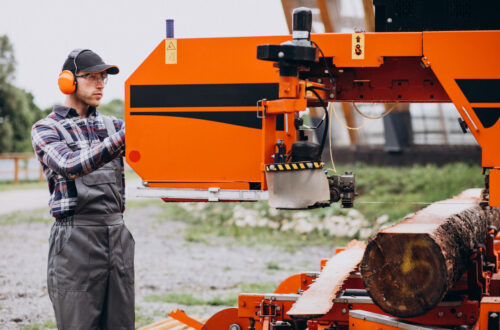
The Future of Scrap Yard Operations: AI and Automation
AI in scrap yard software isn’t some fancy idea for the future, it’s already here, and it’s changing how yards get work done. Think about it: not too long ago, most scrap yards ran on clipboards, handwritten tickets, and long nights trying to balance spreadsheets. It was messy, slow, and stressful.
Now picture the opposite. Instead of digging through piles of paper or second-guessing inventory counts, you’ve got smart scrap yard technology that tracks everything for you, spots errors before they happen, and even automates the reports you used to dread doing by hand. This isn’t just about upgrading a machine or two, it’s about running a yard that’s leaner, faster, and way less complicated.
Why the Shift to AI and Automation?
If you run a scrap yard, you already know the pressure never stops. Costs keep creeping up, the paperwork piles higher every year, and regulators always seem to have a new rule for you to follow. Add in the push for sustainability and customers asking, Where exactly did this metal come from? And suddenly, the old ways of doing things just don’t cut it anymore.
That’s where AI and automation come in. Imagine not having to second-guess inventory counts or spend hours pulling together compliance reports. Picture machines that can sort scrap faster and more accurately than any crew, or software that tracks every load in real time. This isn’t some maybe in the future idea, it’s already here, and yards that use it are pulling ahead.
The best part? It’s not just about staying compliant. AI in scrap yard software and automation helps cut down on labor costs, reduce mistakes, and even keep your team safer by taking on the dangerous, heavy work. At the end of the day, it’s about working smarter, not harder, and that’s how modern yards are getting an edge
Core Technology Pillars for the Smart Scrap Yard
Running a yard today isn’t just about moving scrap around, it’s about making the whole process smarter, safer, and less stressful. Here are the five big technologies that are already changing the way forward-thinking yards do business.
AI in Scrap Yard Software
Think of AI in scrap yard software as an extra set of eyes that never gets tired. Using computer vision and machine learning, it can spot and grade materials with surprising accuracy.
Platforms like BuyScrapSoftware even have built-in tools like their material recognition system and Sparky chatbot that give you instant answers without flipping through paperwork or second-guessing grades.
Automated Scrap Yard Reporting
Paperwork has always been the part of the job nobody enjoys, but you can’t skip it. With automated scrap yard reporting, the system does the paperwork for you. Cloud-based tools update records on the spot and generate compliance reports in seconds. What used to take half a day sitting at a desk now happens while you’re out in the yard.
Scrap Metal Inventory AI
Ever had that moment where you’re not quite sure how much of a certain metal you actually have? Scrap metal inventory AI fixes that. It tracks every load in real time, so you know exactly what’s on hand, what’s running low, and what’s taking up too much space. No more guesswork, no more surprises at the end of the month.
Smart Scrap Yard Technology & IoT
Here’s where things really come together. Smart scrap yard technology uses sensors, cameras, scales, and scanners to feed live data into one dashboard. You can see what’s moving, where it’s going, and how the yard is running without walking every corner. It’s like having a control room view of your entire operation.
Scrap Yard Automation Software
And finally, the heavy lifter: scrap yard automation software. Robots and AI-powered conveyors can now sort metals quickly and with fewer mistakes than a manual team. That means less contamination, faster throughput, and fewer injuries from repetitive or dangerous tasks. It’s not about replacing people, it’s about taking the backbreaking work off their shoulders so the yard runs smoother.
Case Examples & Emerging Research
It’s one thing to talk about AI and automation in theory, but the real proof is in what’s happening on the ground (and in the lab). Here are a few examples showing just how far the technology has already come.
AI-powered sorting systems are no longer experimental. By 2025, some setups are hitting up to 98% accuracy when identifying and separating scrap materials. That’s better than most yards could ever hope to do consistently by hand.
Robotics is speeding things up. Systems like AMP Cortex can make 120 picks a minute with 99% accuracy, while ZenRobotics has been proving how machine arms can sort tons of material without ever getting tired.
IoT and predictive maintenance are making operations smoother. Sensors now flag problems before a machine breaks down, saving yards from costly downtime and wasted hours. It’s the kind of behind-the-scenes optimization that managers barely notice until it saves them thousands.
In research labs, reinforcement learning is helping robots learn how to throw and sort scrap more efficiently. Early tests show a 51% boost in throughput, meaning faster and more effective sorting with less wasted motion.
And for those tricky alloy identifications, spectral analysis combined with machine learning has reached an impressive 96.9% accuracy, almost as good as seasoned experts, but far quicker and more consistent.
Strategic Benefits

It’s easy to talk about AI and automation in theory, but the real proof comes from what’s already happening in yards and research labs right now. The results are hard to ignore.
Take AI-powered sorting systems, for example. Just a few years ago, they were still considered experimental. Now, in 2025, some setups are hitting 98% accuracy when sorting materials. That’s better than even the most experienced crew could consistently manage by hand, and it happens all day without slowing down.
Then there are the robots. The AMP Cortex system, for instance, can pull off 120 picks every single minute with near-perfect precision. ZenRobotics has also been proving that robotic arms can sort massive volumes of material without ever getting tired, bored, or distracted.
Behind the scenes, IoT sensors and predictive maintenance are saving yards from big headaches. Machines can now warn you before they break down, cutting downtime and repair costs. Managers don’t always notice the tech working in the background, but they definitely notice when it saves them thousands of dollars.
Even in research labs, the breakthroughs keep coming. With reinforcement learning, robots are teaching themselves to throw and sort scrap more efficiently, showing a 51% jump in throughput during testing. And when it comes to tough alloy identifications, spectral analysis combined with machine learning is hitting 96.9% accuracy on par with human experts, but far faster and more consistent.
Implementation Roadmap
Upgrading a scrap yard to run on AI and automation isn’t about dropping a robot in the middle of the yard and calling it a day. It’s more like remodeling an old workshop. You fix what’s broken first, then bring in better tools, and eventually, the whole place starts running smoother than you thought possible.
The first move? Take a hard look at how things are working right now. Be honest. Are tickets still scribbled on paper? Is inventory tracked in someone’s head instead of a system? Does pulling a compliance report feel like digging for a needle in a haystack? That reality check tells you exactly where the cracks are.
From there, you fix the basics. Digital tickets and automated scrap yard reporting alone can shave hours off your week. Tools like BuyScrapApp do the heavy lifting here. They take the paperwork out of your hands and keep records straight without you chasing them down later.
Once you’ve got that under control, it’s time to add some brains to the operation. With scrap metal inventory AI, you’re not guessing anymore, you’ll actually know what’s in your yard, what’s moving, and what’s running low. Imagine walking the site and already knowing the numbers instead of digging through piles of notes.
Then comes the muscle. AI sorters, robotic arms, IoT sensors, this is where the automation part really kicks in. Machines can pick, sort, and monitor equipment without getting tired, and predictive maintenance means you’re not waiting for something to break before you fix it. It’s fewer breakdowns, less downtime, and way less stress.
And finally, you don’t just walk away. You keep watching the numbers, tweaking things, and letting analytics show you where to save even more time and money. Platforms like GreenSpark or WeighPay keep giving you that feedback, so you’re always one step ahead.
At the end of the day, making this shift isn’t about tech for tech’s sake; it’s about running a cleaner, faster, safer yard where the system does the hard work, and you get to focus on growing the business.
Also Read: Why Small and Mid-Sized Scrap Yards Need Affordable Software Solutions?
Conclusion
If there’s one takeaway here, it’s this: the future of scrap yards isn’t about guesswork and paper trails anymore. A truly smart yard blends AI-enhanced software, automation, and IoT tools so everything runs leaner, faster, and smarter.
From real-time inventory tracking to automated reporting and even robotic sorters, the technology isn’t just nice to have anymore; it’s what sets apart the yards that grow from the ones that get stuck in the past.
The good news? You don’t have to flip a switch and overhaul your entire operation overnight. The smartest move is to start small, pick one area where the return on investment is obvious, like digital ticketing or automated reporting.
Once you see how much time and stress that saves, it becomes easier (and way less scary) to add on the next piece of the puzzle. Step by step, you’ll build your own smart scrap yard technology ecosystem that pays for itself and keeps scaling as you grow.
If you’re ready to see how this can work in your yard, head over to BuyScrapSoftware.com. Book a demo, test it out, and find out how easy it is to turn the chaos of daily scrap operations into a streamlined system that practically runs itself.





